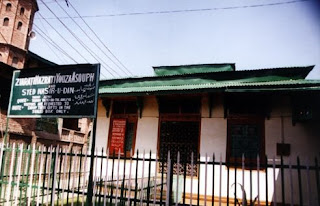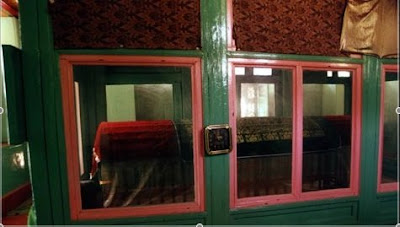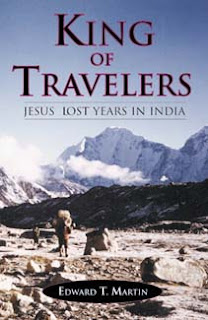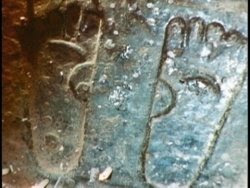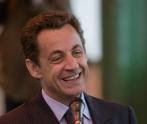
Indian's quest for SURYA ICBM has more to do with its payload capacity than its distance flying capabilities. SURYA means SUN.
CAG has recently castigated the deep security holes in India’s defences. Be it ships, submarines, aircrafts, radar coverage, India is deeply at risk from a sudden Pakistani attack, leave aside China. That Pakistan today is embroiled in a war within, and the US is at its western borders, limits its chances to play prank. India must quickly utilize the time and the threat perception to get its act together. Be it Phalcon AWACS, advanced fighter jets, air-craft carriers, nuclear submarines and even pay-scales of the armed force – the overhaul is required and NOW.
However, the worst kept secret is India’s nuclear capability. It is here that Pakistan is vastly superior not only on technology but on delivery platforms.
(I have been lamblasted for stating that Pakistani nuclear arsenal is vastly superior. But that is the truth. There is a difference between "re-inventing the wheel" and "buying into a tried and tested wheel". Pakistan's methods in buying into a tested wheel may have been dubious, but no one can deny them success in achieving the end objectives.).
Pakistan’s nuclear arsenal are in excess of 60 (probably 100) compared to India’s 35 to 50. Pakistan’s sophisticated nuclear weapons are all missile based, whereas India’s is not. India still has to deliver its nuclear weapons by its air-force.
This places India at a serious disadvantage today. Both China’s and Pakistan’s nuclear arsenal are missile based.
India’s nuclear bombs are heavy and bulky and cannot be fitted on unreliable missiles India has. Even if the Indian missiles become “reliable”, India has NOT been able to miniaturized the nuclear warheads adequately to fit the cones of these missiles.
All of India’s indigenous missiles have been abject failures. This is where Surya: Surya 1 & Surya 2, with a range of 8000 to 20,000kms – the ICBM (Inter Continental Ballistic Missile) comes in.
India’s satellite program has been a tremendous success, unlike its missile program. Surya ICBM will borrow heavily from the satellite program, making the missile more reliable and “worthy”. Also, Surya will be able to carry the “heavier” Indian payloads as India has not mastered the “miniaturisation” technology that will allow the nuclear warhead to be fitted on the cones of a smaller missile.
To counter the threat from China and Pakistan, all India needs are short and medium range missiles and not ICBM. Ideally, the supersonic Brahmos would have given a game changer advantage for India over Pakistan, if it were “nuclear weaponised”. While efforts are on towards this, India has so far not been successful.
Therefore, India does not have a proven nuclear warhead in the 1000 kg range for fielding in Agni missiles. Thus, SURYA comes in to correct the serious flaw in our nuclear deterrent. ICBM Surya is therefore not required for its delivery range but for its payload capacity.
ERIC MARGOLIS states: For the past decade, India has been quietly developing a series of ICBM's under cover of the Indian Space Research Organization (ISRO). The GSLV-III heavy space launcher, which India has used to put numerous satellites into orbit, has been transformed into its new, three-stage Surya ICBM with a range of 6-7,000 miles. A missile that can launch heavy satellites can also deliver warheads at long range.
Why does India need ICBM's? India's Agni-III medium range nuclear-armed missile can cover nearly all potential enemies, such as China, Iran, and Russia. India's short-ranged Prithivi missiles can cover all of Pakistan.
Over 60% of Indians subsist on less than $2 daily. About 75% lack indoor plumbing. Yet India, one of the world's poorest nations, has embarked on a buildup of hugely expensive strategic arms that has made it the world's third or fourth nuclear weapons power after the U.S., Russia, and Israel.
Since India is most unlikely to war with Europe, Australia, or Latin America, the only other conceivable target for India's long-ranged ICBM's would be the United States.
Eric Margolis gets the last part wrong. The target is not the United States, but countries nearer to India. And as stated before, we need the ICBM more for its "PAYLOAD CAPACITY" and not for its "RANGE".
A look back at the Indian missiles:

PHRITHVI: MIXED. The only reliable delivery system inducted is the 300 kms range. Subsequent versions of this missile are undergoing tests and are not “accurate”. Hence there are 2 old missile groups (222 & 333) and two new groups (444 & 555).

AKASH: Failure. Akash was meant as a substitute for Pechora. After several years of testing, Akash has been shelved.
TRISHUL: Failure. It has been tested over 80 times without coming anywhere near being operational. Trishul is now being replaced by Israeli BARAK and Russian systems.

NAG: Failure. This anti-tank missile was a colossal failure with the Army refusing to place order for this missile.

AGNI: Failure. Agni I (range: 700 -800 kms) and Agni II (range upto 2500 kms) were both failures. The jury is still out there on the Agni III launch (3500 kms). The last Agni test landed 800 kms off its intended target. In an earlier test, the navy personnel were eagerly awaiting a few kms off the intended splash down point of Agni, and they could not see any splash down. No one knew where it splashed down, or how far. To the media, we shouted that the test was a resounding success. 2 Missile groups have been cleared (334 for Agni I) and (335 for Agni II), but whether they are operational is not known.

BRAHMOS: Success.
In midst of all these failures (barring Brahmos) of our missile program, ISRO with its satellite launch technology shines bright.
In fact, a Pakistani think tank commented: “How could a country that cannot feed, or clothe its population build space vehicles. How can a country whose entire missile program was scrapped by the military send rockets into space? How can a country which takes 10 years to design a plane creates a dud, explore the moon? How can a country where 75% of the population lives below Sub-Saharan poverty find the money to spend on satellite technology (India: More than 75% live below Sub Saharan poverty line ). How can the hungriest country in Asia compete with the Chinese and the Japanese?”
ISRO is indeed India’s pride. It has launched flawlessly and at far cheaper cost than any of its competitors and with the recent launch of a vehicle to the moon, Chandrayaan-1, ISRO has added another deserving feather in its cap.
The technology for SURYA ICBM would be that of a space launch vehicle, directly via the PSVL (Polar Satellite Vehicle Launch).
ROAD TO INDIA’S ICBM CAPABILITY: (Sequence taken from and corroborated from various sites, articles. Mostly from rupeenews.com)
1960s: NASA trains Indian scientists at Wallops Island, Virginia, in sounding rockets and provides Nike-Apache sounding rockets to India. France, the United Kingdom, and the Soviet Union also supply sounding rockets.
1963-1964: A. P. J. Abdul Kalam, an Indian engineer then, works at Wallops Island, where the Scout space-launch vehicle (an adaptation of Minuteman ICBM solid-fuel rocket technology) is flown.
1965: Following Kalam’s return to India, the Indian Atomic Energy Commission requests U.S. assistance with the Scout, and NASA provides unclassified reports.
1969-1970: U.S. firms supply equipment for the Solid Propellant Space Booster Plant at Sriharikota.
1970s: Kalam becomes head of the Indian Space Research Organisation (ISRO), in charge of developing space launch vehicles.
May 1974: India conducts a “peaceful nuclear explosion.”
1980s: The United States and its six economic summit partners secretly negotiate the Missile Technology Control Regime (MTCR). After one and a half years of difficult negotiations on the question of space launch vehicles, all partners agree that they must be treated as restrictively as ballistic missiles because their hardware, technology, and production facilities are interchangeable. The MTCR is informally implemented in 1985 and is publicly announced in 1987.
July 1980: India launches its first satellite with the SLV-3 rocket, a close copy of the NASA Scout.
February 1982: Kalam becomes head of the Defense Research and Development Organisation (DRDO), in charge of adapting space-launch vehicle technology to ballistic missiles.
May 1989: India launches its first Agni “technology demonstrator” surface-to-surface missile. The Agni’s first stage is essentially the first stage of the SLV-3. Later, the Agni becomes a family of three short- to intermediate-range ballistic missiles.
1990: The United States enacts a sanctions law against missile proliferation. Two weeks later, the Soviet Union agrees to supply India with cryogenic upper-stage rockets and technology, and the two parties become the first countries sanctioned under the new U.S. law.
1993: The United States lifts sanctions on Russia after Moscow agrees to limit the transfer to a small number of rocket engines and not production technology.
1994: India launches the Polar Space Launch Vehicle (PSLV). Stages 1 and 3 are 2.8-meter-diameter solid-fuel rockets. Stages 2 and 4 are liquid-fuel Vikas engines derived from 1980s French technology transfers.
May 1998: India tests nuclear weapons after decades of protesting that its nuclear program was exclusively peaceful. The United States imposes broad sanctions on nuclear- and missile/space-related transfers.
April 1999: India launches the Agni II, an extended range missile that tests re-entry vehicle “technology that can be integrated with the PSLV programme to create an ICBM” according to a defense ministry official.
May 1999: Defense News cites DRDO officials as stating that the Surya is under development.
November 1999: India ’s minister of state for defense (and former head of DRDO), Bachi Singh Rawat, says India is developing an ICBM known as Surya that would “have a range of up to” 5,000 kilometers. A little more than two weeks later, Rawat is reportedly stripped of his portfolio because of his disclosure.
April 2001: Khrunichev State Space Science and Pro duction Center announces that it will supply five more cryogenic upper stages to India within the next three years.
September 2001:The United States lifts many of the technology sanctions it imposed in 1998. Subsequently, Prime Minister Atal Bihari Vajpayee visits the United States amid agreement to broaden the technology dialogue.
December 2001: A U.S. National Intelligence Estimate states, ” India could convert its polar space launch vehicle into an ICBM within a year or two of a decision to do so.”
July 2002: Kalam becomes President of India.
September 2002: The United States tells India it will not object to India launching foreign satellites as long as they do not contain U.S.-origin components.
January 2004: President George W. Bush agrees to expand cooperation with India in “civilian space programs” but not explicitly to cooperate with space launches. This measure is part of a bilateral initiative dubbed “Next Steps in Strategic Partnership.”
October 2004: A Russian Academy of Sciences deputy director reportedly states that India is planning to increase the range of the Agni missile to 5,000 kilometers and to design the Surya ICBM with a range of 8,000-12,000 kilometers.
July 2005: Bush agrees to cooperate with India on “satellite navigation and launch,” and Indian Prime Minister Manmohan Singh agrees to “adherence to Missile Technology Control Regime guidelines.”
August 2005: According to Indian Ministry of Defense sources, there are plans to use the non-cryogenic Vikas stage for the Surya and to have the missile deliver a 2.5-3.5-metric-ton payload with two or three warheads with explosive yields of 15-20 kilotons.
11th October 2008: Indo - US Nuclear Deal signed and ratified.
Why 15-20 kilotons?
The nuclear tests carried out at 3:45 pm on May 11th were claimed by the Indian government to be a simultaneous detonation of three different devices - a fission device with a yield of about 12 kilotons (KT), a thermonuclear device with a yield of about 43 KT, and a sub-kiloton device. The two tests carried out at 12:21 pm on May 13th were also detonated simultaneously with reported yields in the range of 0.2 to 0.6 KT.
However, there is some controversy about these claims. Based on seismic data, U.S. government sources and independent experts estimated the yield of the so-called thermonuclear test in the range of 12-25 kilotons, as opposed to the 43-60 kiloton yield claimed by India. This lower yield raised skepticism about India's claims to have detonated a thermonuclear device.
Observers initially suggested that the test could have been a boosted fission device, rather than a true multi-stage thermonuclear device. By late 1998 analysts at Lawrence Livermore National Laboratory had concluded that the India had attempted to detonate a thermonuclear device, but that the second stage of the two-stage bomb failed to ignite as planned.
Given that India’s claim of detonating a thermo-nuclear device is contested and is probably correct, India’s reliance back to bulky nuclear payload and an ICBM as a delivery platform starts to make sense. Multiple warheads : Sounds good.

The news gets better. Surya may have a healthy competition from HSTDV - The Hypersonic Technology Demonstrator Vehicle. This is beyond Brahmos, but incorporates the success of this superonic cruise missile. India is working on Brahmos II which will have hypersonic speed - Mach 5. Taking the lessons from here, India is collaborating with Israeli Aerospace Industries (IAI) for a long range hypersonic cruise missile capable of carrying nuclear warheads - the HSTDV. Of the many missiles that India is developing or has tried to develop, I am bullish about HSTDV as it is based on a proven stable platform of Brahmos, and in the hands of the Brahmos Team and IAI. It is the pre-cursor to a "re-usable" platform too !


